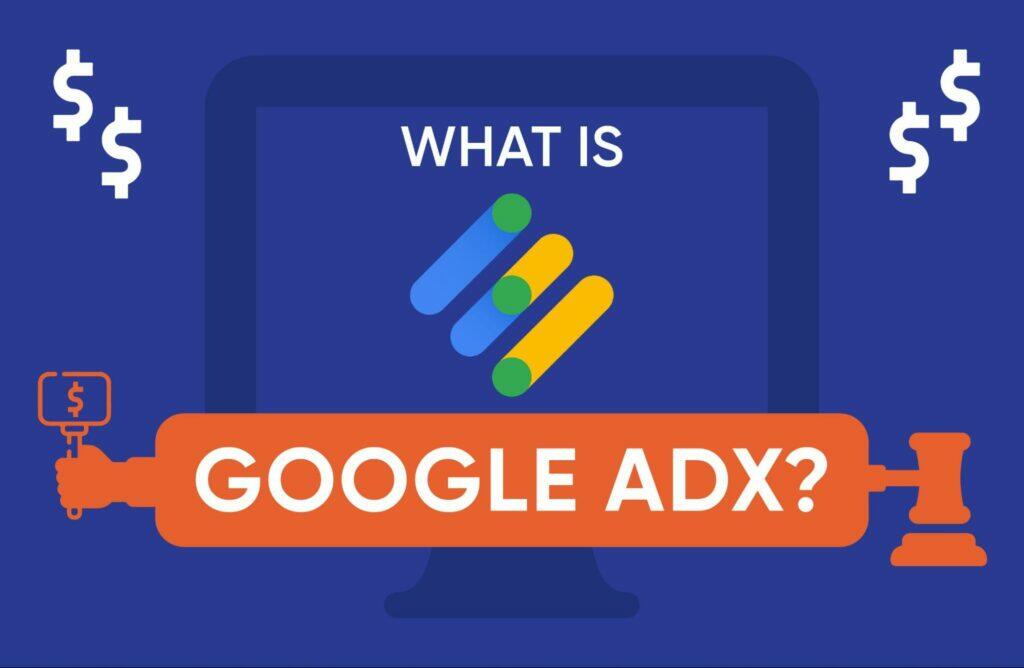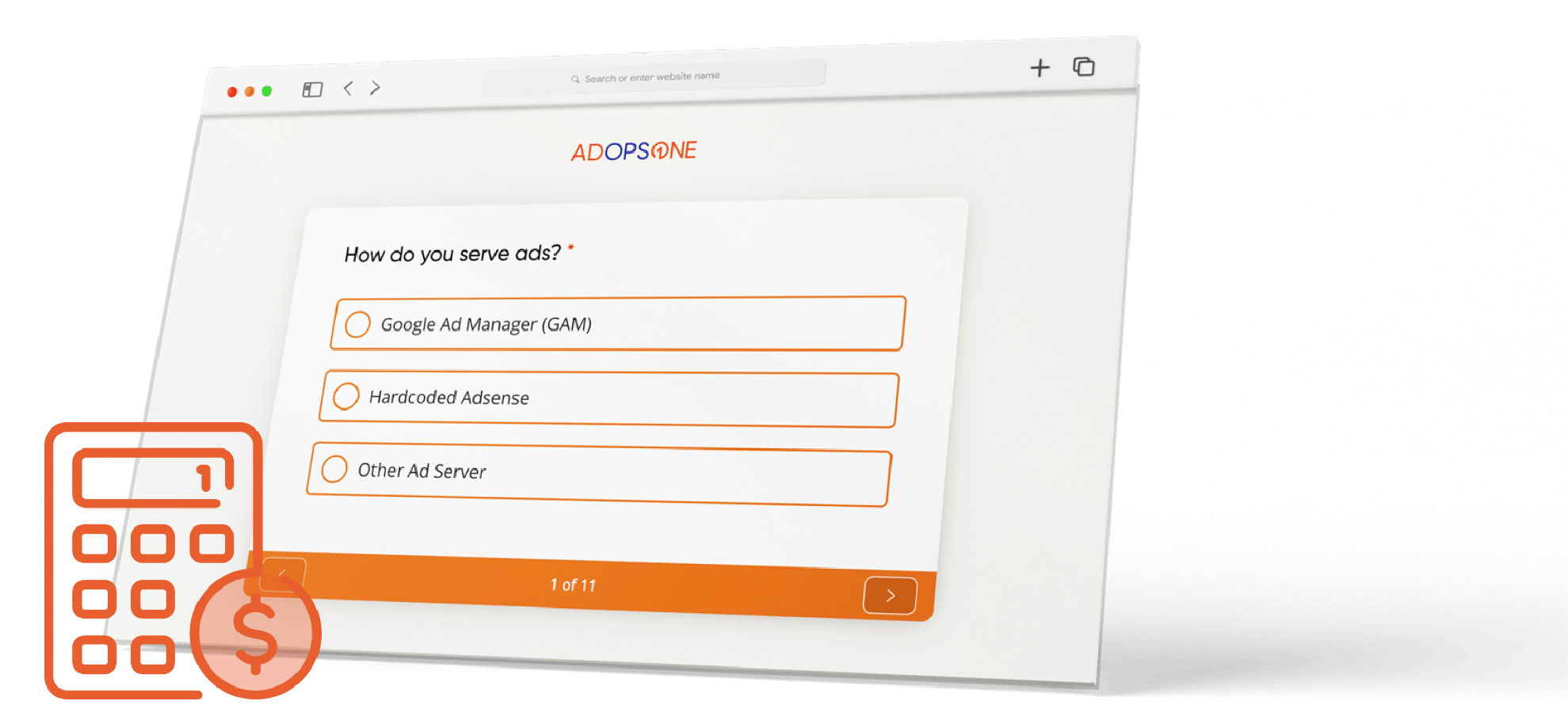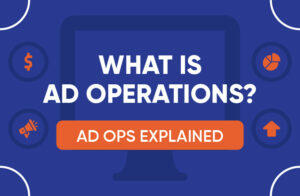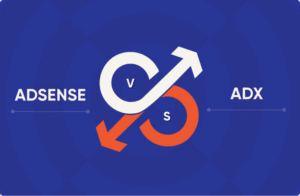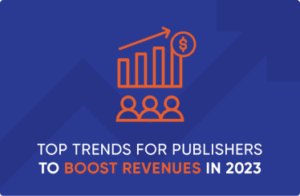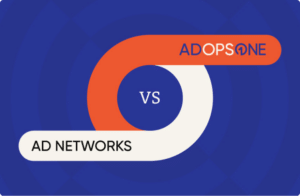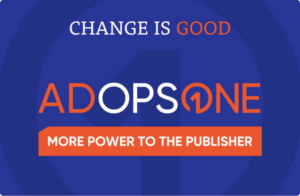Google Ad Exchange (Google AdX) is an invaluable tool for ambitious publishers looking to catapult their ad revenue and strategically transform their monetization strategy. AdX allows eligible publishers to tap into an expanded pool of demand from global brands and advertisers, which is not possible to do when working with individual ad networks such as Google AdSense.
This increased demand leads to more competitive bidding, resulting in better ad revenue for publishers.
But what is Google AdX, and how has it become integral to today’s online advertising industry?
That’s what we’re about to answer. Join us as we deconstruct the terminologies surrounding Google AdX and explain everything publishers need to know should they be planning to apply for AdX.
Table of Contents
- What Is Google Ad Exchange?
- Google AdX Eligibility Criteria
- How to Get Started With Google AdX
- Partnering with a Third-Party Google AdX Partner
- Taking the Next Steps With Google AdX
- Google AdX’s Value Proposition for Publishers
What Is Google Ad Exchange?
Google Ad Exchange (Google AdX) is a programmatic advertising marketplace connecting ad inventory buyers and sellers. It allows advertisers to bid on ad impressions in real time and publishers to monetize their inventory through a competitive auction process.
Founded in 1996 as an ad server, AdX was formerly known as Doubleclick Ad Exchange before being acquired by Google in 2008 and eventually renamed Google Ad Exchange.
Google has positioned AdX as a premium ad exchange compared to AdSense, bundled together as a part of Google Ad Manager (GAM). Publishers using AdX not only have access to buyers that are using Google Ads but also to any Google-approved, third-party demand partners. AdSense publishers, in comparison, only have access to Google Ads advertisers.
But Google AdX is more than just a marketplace. It equips publishers with the tools and services required to efficiently manage and sell their advertising inventory. At the same time, the platform also opens up a world full of opportunities for advertisers to reach their target audience by pinpointing specific demographics, locations, and behaviors.
Google AdX Eligibility Criteria
Since Google Ad Exchange (Google AdX) comes bundled as a part of GAM, eligibility requirements for GAM also apply to AdX. These requirements are:
- Publishers must have a Google AdSense account.
- They must also have a website or app.
- All content and ads delivered through AdX must comply with Google’s Publisher Policies and Google Ad Manager Partner Guidelines. AdX also specifies a set of policies regarding ad quality that all ads must conform to.
How to Get Started With Google AdX
To register for a Google Ad Exchange (Google AdX) account, publishers can contact Google directly by visiting the Google support contact page or the help section within the publisher’s Google Ads account. Google will then assign you an account manager if you meet their requirements.
It’s worth noting that publishers directly applying for an AdX account need to have around 100 million monthly page views to secure access. This is much higher than the 5 million monthly page views widely cited by the rest of the internet, though Google hasn’t published any official figures on the subject.
Smaller publishers can partner with a third-party solutions provider rather than directly applying for Google AdX and potentially being rejected.
Partnering with a Third-Party Google AdX Partner
Publishers that want to apply for a Google Ad Exchange (Google AdX) can do so through a Google Certified Publishing Partner (GCPP) or a Multiple Customer Management (MCM) partner. It’s worth noting that MCM is only available to publishers that pay for Google Ad Manager 360 (GAM 360), the premium version of GAM.
MCM is designed to streamline managing, selling, and optimizing ad inventory across multiple clients or accounts. This feature allows for efficient inventory allocation, ensuring every ad space is utilized to its maximum potential. With MCM, users can manage multiple inventories from a single platform, reducing complexity and increasing operational efficiency. This is particularly beneficial for large-scale publishers and partners who need to manage a vast array of inventories.
GCPP and MCM partners are Google-approved, third-party entities that help smaller publishers access both AdX and GAM. Several publishers also delegate the management of their AdX and GAM accounts to such partners.
These third-party partners serve as more than just a gateway into Google AdX. They act as trusted advisors, optimizing a publisher’s ad placements and ensuring they garner the highest possible revenue from their ad inventory.
The collaboration doesn’t stop at ad layouts and display parameters; these partners will also help fine-tune broader monetization strategies, ensuring their publishers make the most of the opportunities Google AdX presents.
Taking the Next Steps With Google AdX
Google Ad Exchange (Google AdX) comes fully integrated with GAM, and all AdX features are accessible from within GAM. To access AdX, publishers must update user permissions in their Google Ad Manager account.
Some important GAM features that publishers should be familiar with are:
Unified Pricing Rules (UPRs)
Google AdX can be optimized via unified pricing rules (UPRs), allowing publishers to set floor prices for their entire inventory across all programmatic deal types. The advantage of setting UPRs is that it prevents inventory from being sold at a lower-than-desired cost per mille (CPM).
The AdX UPR feature can be accessed from the Inventory tab in GAM.
Inventory Segmentation by Channel
A channel in AdX is a user-defined group of inventory that simplifies reporting and analysis. Google AdX allows publishers to segment inventory by two-channel types—custom channel and URL channel. All available inventory types—display, games, mobile app, in-stream video, etc.— can be segmented into user-defined channels and analyzed accordingly.
Reporting
The platform shares reports of the eCPMs, impressions, and names of buyers, advertisers, and ad agencies with publishers. This data allows publishers to make more informed decisions for their ad operations.
However, one of AdX’s significant disadvantages is its complex and often inaccurate reporting. For instance, it doesn’t report complete data for third-party demand partners. This is why several publishers choose to team up with service providers such as AdOpsOne that make reporting and analysis for AdX simple and accessible through the use of a simple-to-read, comprehensive Dashboard that aggregates data from multiple sources (including Analytics, GAM, and demand partners).
Google AdX’s Value Proposition for Publishers
Publishers often graduate from Google AdSense to Google Ad Exchange (Google AdX), motivated by better monetization prospects. But what exactly does AdX bring to the table that makes it so attractive for publishers?
1. Higher Ad Revenue Potential
AdX is an ad exchange rather than an ad network. This means it can allow multiple ad networks to compete in real-time for a publisher’s inventory. This creates more competition among advertisers vying for high-quality ad space, leading to increased ad revenues for publishers.
Furthermore, AdX employs header bidding, a programmatic ad auction technique that simultaneously runs a real-time auction involving all demand partners. This results in even higher CPMs for publishers than ad networks that deploy the conventional waterfall model for bidding.
2. Advanced Targeting Options
AdX provides enhanced targeting options such as demographic, geographic, and behavioral targeting. This specificity enables publishers to engage a more precise and interested audience, enhancing their advertisements’ effectiveness.
3. Greater Control Over Ad Content
Google AdX provides publishers with increased control over ads displayed on their platforms. By contrast, AdSense operates on a more automated basis, limiting customization options. The greater control offered by AdX enables publishers to better align their ad content with their audience’s interests and preferences.
4. Wider Access to Advertisers
AdX unlocks the door to a larger pool of potential advertisers than AdSense, paving the way to increasing ad revenue.
In a nutshell, AdX offers an array of benefits over ad networks such as Google AdSense, proving itself to be a powerful ally for publishers looking to optimize their ad revenue.
Final Thoughts
Google Ad Exchange (Google AdX) is one of the search giant’s most advanced advertising solutions for publishers with the know-how and the resources to leverage its powerful capabilities.
However, not all publishers will have the resources to harness AdX to its full potential. Not only does it come with high entry barriers, but it is also complex to understand and resource intensive to operate.
This is why many publishers partner with third-party service providers, such as AdOpsOne. AdOpsOne handles all the complex tasks associated with setting up and running an AdX account. It also helps publishers make sense of AdX reporting and analysis through its proprietary dashboard that plugs directly into a publisher’s tech stack.
AdOpsOne is part of Affinity- one of just 55 Google Certified Publishing Partners that exist today.
Get in touch with us today to learn more about how we can help you increase your revenue by leveraging the power of AdX and GAM.
What Is Google AdX—FAQs
The world of ad exchanges can seem daunting and complex to publishers still finding their way around them. Here, we’ve answered a list of common questions about Google AdX to help further clear up any uncertainty.
What Is the Minimum Requirement to Access Google Ad Exchange?
Google doesn’t publicly state any minimum traffic or page view requirements for accessing AdX. However, it’s widely reported that publishers looking for direct access to AdX need a minimum of 5 monthly page views; otherwise, they’re unlikely to be approved. As mentioned above, this requirement is likely vastly underestimating the monthly pageviews to be considered for AdX.
Publishers that partner with a Google Certified Publishing Partner (GCPP) or a Multiple Customer Management (MCM) partner don’t need to be concerned about such requirements. However, publishers do need to comply with Google’s publisher and advertising policies.
Why Is It Challenging to Access Google AdX?
Google AdX is Google’s premium content monetization solution that allows publishers to generate higher revenues. AdX comes with advanced capabilities, and not all publishers may have the resources to use them fully.
By comparison, AdSense, another Google offering, has relatively low entry barriers, and publishers stand a good chance of being accepted even if their website doesn’t attract significant traffic.
Revenue opportunities with AdSense are limited to the Google Display Network (GDN), whereas having a Google Ad Exchange account means publishers can connect with multiple third-party demand partners.
What Are Google AdX Partners?
Google AdX Partners are Google-certified entities that help publishers access and leverage Google AdX. Google trusts them to offer the best ad monetization services to publishers.
These partners often have a dedicated Google account manager who can assist publishers in optimizing their existing ad stacks, increasing eCPMs, simplifying ad management, and introducing new Google AdX demand partners.
